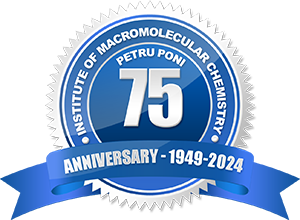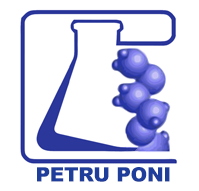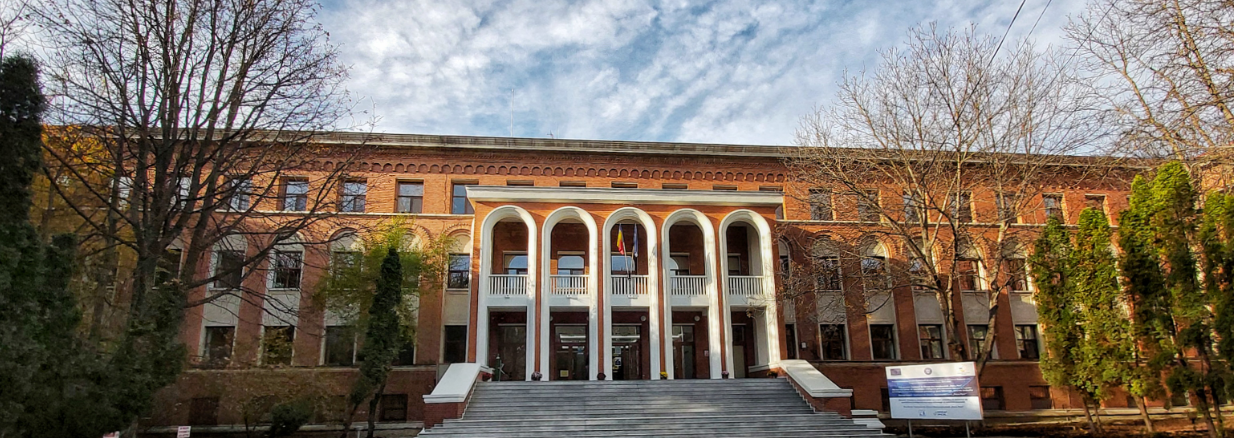2022
Short summary
The EnStoreSW project aims at developing polymers based on thiophene derivatives for use both as capacitive and electrochromic materials, as well as their interdisciplinary investigation and testing in flexible energy storage smart windows, so as to reach TRL 4. For this purpose, in Stage 1 (year 2022) the synthesis of monomers and polymers based on ProDOT was carried out, with emphasis on the synthetic processes optimization and purification methods, as well as on their structural identification and physico-chemical investigation as isolated molecules (in solution). Thus, 3 monomers based on ProDOT with different substituents (type alkyl, ester or hydroxyl) were synthesized through different techniques that required the optimization of the experimental conditions. The monomers were purified by column chromatography and structurally characterized by spectral methods, such as FTIR, 1H and 13C-NMR, which confirmed their correct structure. Also, they were studied by UV-Vis absorption and fluorescence spectroscopy, with the aim to evaluate the main electronic transitions that occur in these monomers, but also the changes induced on the electronic transitions by the different anchored side substituents. Based on these monomers and a commercial monomer, 8 polymers based on ProDOT were obtained. The synthesis of polymers was carried out by different methods, such as electrochemical polymerization, oxidative polymerization, direct C-H arylation and Yamazaki-Higashi polycondensation. After optimizing the synthesis conditions, the polymers were isolated from the reaction medium and purified by specific methods, then confirmed from the structural point of view by FTIR, 1H and 13C-NMR spectroscopy, while their molecular weights were evaluated by gel permeation chromatography. The photo-optical behavior of the polymers was investigated by UV-Vis absorption and fluorescence spectra recorded in solution. These highlighted the presence of a main absorption band at wavelengths beyond 450 nm, with the exception of one polymer, which, due to a reduced conjugation, dispalyed a weak absorption at approximately 360 nm. By excitation with the wavelength corresponding to the main absorption maximum, all polymers showed fluorescence, with emission in the blue, yellow or orange-red spectral range, according to the structure of each polymer. All polymers showed oxidation processes in the cyclic voltammetry measurements, of reversible or irreversible character, depending on the structure of the monomeric unit. DFT molecular simulations showed that the polymers have planar, conjugated structures, with molecular orbitals delocalized mainly on the thiophene ring, excepting the polymer obtained by polycondensation, which has a twisted conformation and well-separated molecular orbitals. The simulation of the oxidized species (polarons/bipolarons) generation led to absorption spectra with new bands, which indicated that the present polymers have potential as electrochromic materials. The obtained results were analyzed and discussed in the stage report, and part of them were disseminated at 3 scientific events in the form of 2 oral communications and 1 invited lecture.
2023
Short summary
As a continuation of the activities carried out in Stage 1 of the EnStoreSW project, in Stage 2 (year 2023), our pursuit was to obtain electrodes based on polypropylenedioxythiophene (PProDOT), and to test them in the three-electrode cell configuration in order to demonstrate the polymer potential for energy storage smart window (ESSW) application. First, 2 flexible electrodes were obtained by embedding conductive silver nanowires into polyimide films, which showed excellent transparency and mechanical properties, as well as a good electrical conductivity, of up to 27 S/cm. Then, the ProDOT-based polymers reported in Stage 1 were deposited on both rigid and flexible surfaces, when 8 rigid electrodes and 8 flexible electrodes based on PProDOT as active layer were obtained after an extensive optimization processes of the experimental conditions for homogeneous films deposition. From the morphological point of view, some of these electrodes presented a porous structure, but in some cases, due to the dense packing of PProDOT conjugated chains, the films displayed a molecular organization into granules or particles. The obtained polymer films were investigated with regard to the photo-optical, thermal and wetting properties, being found that they display the main absorption band centered in the visible range, at a wavelength depending on the degree of conjugation and molecular planarization in solid state, a good thermal stability, in the range of 310°C-383°C, and a high hydrophobic character. The electrochemical characteristics of the electrodes modified with PProDOT evaluated by cyclic voltammetry and spectroelectrochemistry highlighted the ability of these polymers to change their color under an applied voltage, and also, to store electric charges. Thus, the specific areal capacitance of these polymers varied from tens of µF/cm2 to values up to 4 mF/cm2, depending on the scan rate, polymer structure and method used to prepare the polymer. The electrochromic effect experienced by the majority of the investigated polymers consisted in the discoloration of the opaque film from violet or cherry-red to transmissive green/blue, or vice versa, coloring from transmissive yellow to opaque green, with short color switching times, of seconds or even under 1s, and a bleaching/coloring efficiency of up to 696 cm2/C. The long-term stability and reversibility of the electrochromic response of the rigid and flexible electrodes based on PProDOT was evaluated by chronoamperometry based on the variation of transmittance corresponding to the oxidized and neutral species as a function of time, over up to 500 color switching cycles. The energy storage potential of the PProDOT-based electrodes was also demonstrated on the basis of galvanostatic charge-discharge tests, which highlighted that when fully charged, the PProDOT films change the color, and when discharged, they return to the original color, suggesting the potential of these polymers for use as electrode materials in ESSWs. The obtained results were systematized in the Stage 2 report, and part of them were disseminated through 10 participations (2 invited lectures, 6 oral presentations, 2 posters) at 4 scientific events and 3 scientific articles published/under evaluation in journals with FI> 3.
2024
Short summary
The key objective of the EnStoreSW, which aimed at obtaining thiophene-based polymers materials with integrated capacitive and electrochromic functions, as well as their interdisciplinary investigation and testing in energy storage smart windows (ESSWs), was achieved in Stage 3 of the project by validating the PProDOT-based electrodes obtained in Stages 1 and 2 upon their testing in ESSW prototypes (two-electrode configuration). This was preceded, however, by carrying out optimization processes in the three-electrode setup, to establish the optimal conditions for improved electrochromic and energy storage performances.
Therefore, in 2024, based on the detailed analysis of the results obtained in the three-electrode cell configuration, the best performing PProDOT-based polymers were selected for use in ESSW prototypes. The ESSW prototypes were obtained using ITO-coated glass substrates or ITO-coated polyethylene terephthalate (PET) substrates with the following configuration: glass (PET)/ITO/PProDOT//electrolyte gel/ /ITO/glass (PET). In some cases, an additional PEDOT:PSS layer was used between the electrolyte gel and the second ITO electrode, acting as an ion storage layer. These ESSW prototypes were tested by: i) recording cyclic voltammetry curves at different scan rates, to evaluate the energy storage capacity, ii) recording impedance spectra to evaluate the series resistance, iii) chronopotentiometry to obtain galvanostatic charge/discharge (GCD) curves and evaluate the capacitive parameters and stability of the ESSW prototypes at repeated charge/discharge cycles, and iv) chronoamperometry to record spectro-electrochemical curves and evaluate electrochromic parameters and the stability of the electrochromic response at multiple color switching cycles. In general, the devices realized with glass/ITO electrodes showed a better performance compared to those manufactured with PET/ITO, but there were also exceptions. The highest coloration efficiency was 631 cm2/C, which was obtained by one of the PProDOT-based copolymers with a good potential to store energy (specific areal capacitance of 1.08 mF/cm2 at 5mV/s). The conduct of the ESSW prototypes was also evaluated in a bend shape, the results demonstrating that the electrochromic effect is not affected by the bending process, while the energy storage capacity is slightly reduced in terms of capacitance and energy density. In order to increase the electrochromic and energy storage performances, several optimization directions were addressed, including the modification of the electrolyte gel, the introduction of fillers (MWCNTs) in the polymer matrix, as well as the modification of the polymer architecture, by replacing linear structures with three-dimensional ones.
All the results obtained during the implementation of EnStoreSW were validated by demonstrating the real operation of the most efficient ESSW prototype. Thus, four identical ESSW prototypes were connected in series after charging by a commercial Si-based solar cell, when their purple color transformed into one almost transparent with a slight cyan-blue hue. The obtained new color visually indicated that the devices possess energy. The charged ESSW system operated like a supercapacitor, demonstrated by its ability to activate and power a red LED, which received sufficient energy for functioning (Figure below). This demonstrative experiment led to the conclusion that the ESSW prototype realized with the ProDOT-based polymer as the electrode material followed the operating mechanism of a smart window capable of storing energy and can be used in current practical applications, for which the level of technological maturity and commercial perspective should be evaluated in the future.
The results obtained at the end of the project were systematized in the Final Research Report and disseminated through 31 participations (1 plenary lecture, 7 invited lectures, 16 oral presentations and 7 posters) at national or international scientific events, and 7 scientific papers published or under evaluation in journals with FI > 3. Consequently, the objectives proposed in EnStoreSW were achieved by completing all planned activities and scientific indicators.

|








